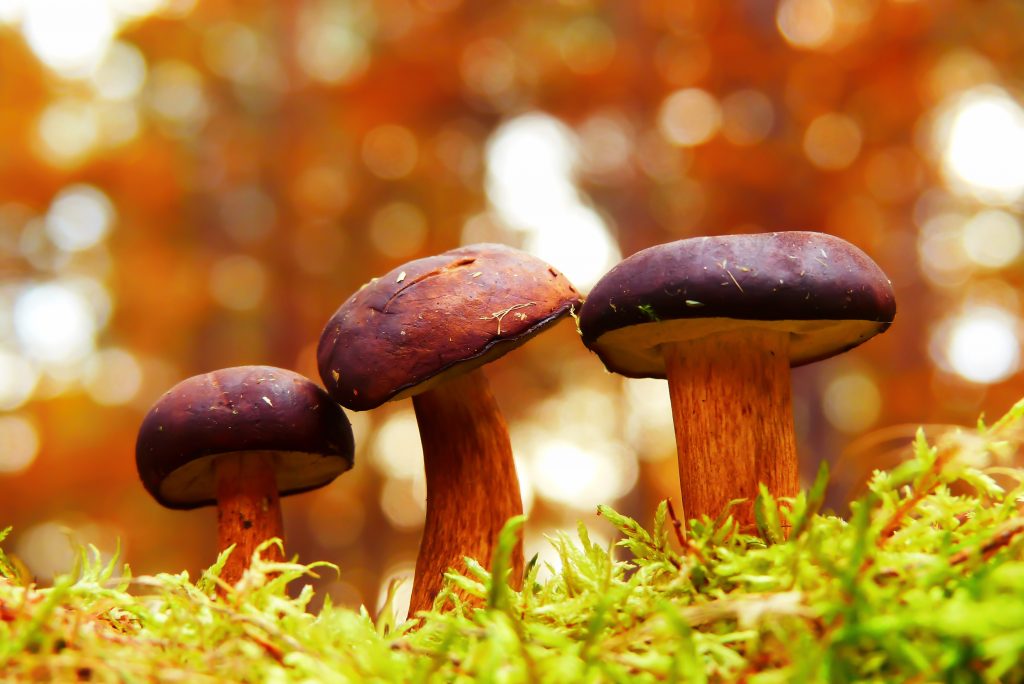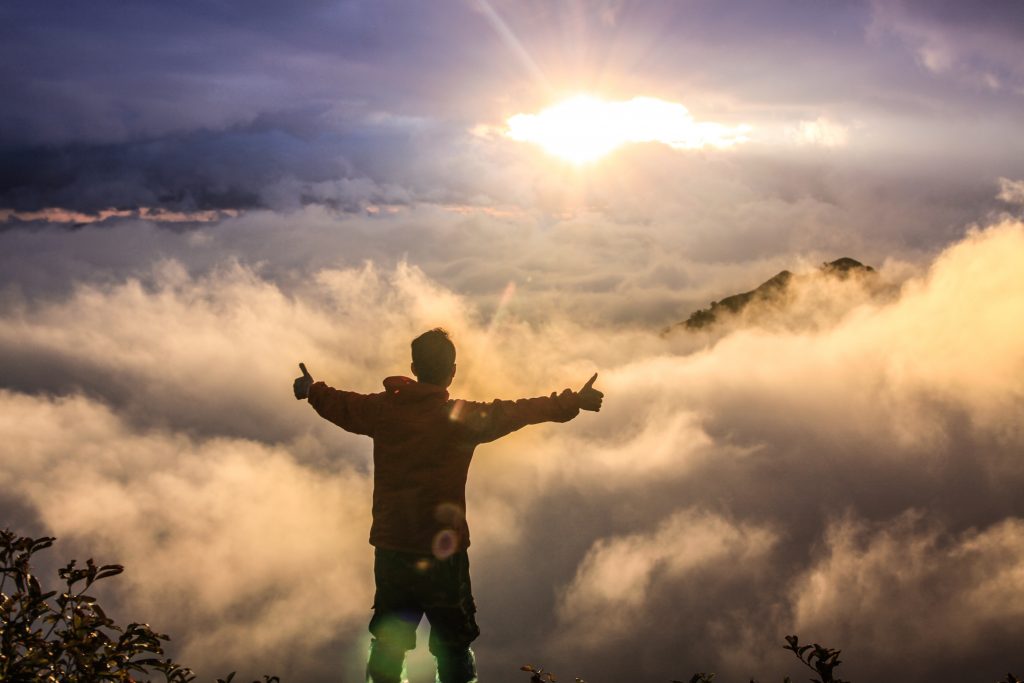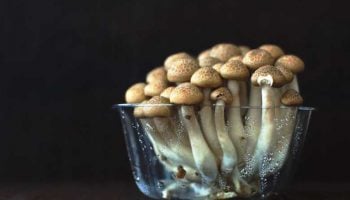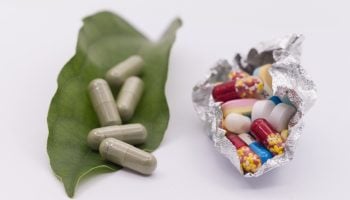For as long as humans have been on this planet we’ve been intrigued by altered states of consciousness.
That is to say, the use of psychedelics and tacit understanding of their potential far preceded any clinical research or qualitative studies. Humans are curious, our minds are expansive, and it makes sense that the exploration of these altered states would include varying degrees of alteration and affect.
Given this, and the growing breadth and depth of psychedelic research, it’s somewhat surprising that microdosing has been, until recently, largely left out. (It’s not as though it hasn’t been occuring.)
History/Overview
In his seminal work, The Psychedelic Explorer’s Guide, James Fadiman — the self professed “least-known microdosing researcher in the world,” [and] “the most famous microdosing researcher in the world” — states that, “indigenous cultures have known about and used sub-perceptual doses of different psychedelics for centuries” (Explorer’s Guide198). At last year’s Science and NonDuality (SAND) conference Fadiman said of microdosing, “there’s no science yet, just world wide use.”
Despite its recent popularization, microdosing is not a new phenomenon, and as of the last decade, the research around it has begun to build.
The Psychedelic Explorer’s Guide was published in 2011. In it Fadiman,“describes well-researched uses of psychedelics to advance a spiritual quest, for healing, for personal exploration and psychotherapy, and for facilitating scientific exploration and invention” (Explorer’s Guide1). The book dedicates an entire chapter to microdosing, in which Fadiman details the world’s first qualitative study into the use of sub-perceptual (10-20 microgram) doses of LSD and psilocybin.
In an interview with Wired magazine, when asked, “who came up with the idea of taking these drugs in such small doses?” Fadiman said, “Well, by mistake, probably me.”
The mistake he’s referring to involves Albert Hofmann, who in 1943 became the first person to synthesize and ingest LSD. The story goes that Fadiman heard from his friend Robert Forte that Hofmann was interested in the potential benefits of small doses of LSD, and that he had heard Hofmann refer to a small dose as ten micrograms. This compelled Fadiman who engaged his friends and colleagues and, as reported by Wired, “began to get reports that there were useful effects. It was only later that he learned Hofmann had actually envisaged a dose of around 25 micrograms, which most people would consider high for a microdose.”
This sort of engagement was the first of its kind. Prior to this, no one had catalogued (at least for public release), let alone systematically gathered, first-hand reports of the experience and benefits of microdosing. Fadiman acknowledged this in his book by stating, “as these reports are the first to appear in literature, I’ve avoided coming to any general conclusions about these low doses beyond noting that all the reports in my files indicate, as these individuals [quoted in the book] have, that low-dose use has been positive” (Explorer’s Guide 199).
Over the next five years, Fadiman and his research partner Sophia Korb continued this survey, and in January 2016, published the full results of their research. In April 2017, they presented their findings to much acclaim at the MAPS Psychedelic Science conference held in Oakland, CA. The results were overwhelmingly positive.
As reported by Vice News, the data was, “culled from the reports of 418 volunteers, of whom 284 were men, 126 were women and 5 identified as trans, nonbinary, or genderqueer. The age range from the group was 18-78, with an average age of 34, and a full three-quarters of the participants cited ‘depression’ as their primary reason for choosing to microdose.” On the whole, “those taking LSD microdoses reported a remarkable increase in feelings of determination, alertness, and energy, as well as a strong decrease in feelings of depression.”
Reports from Fadiman and Korb’s study also yielded some unprecedented and unexpected results. Five color blind participants “reported seeing tracers (the glowing trails that follow moving objects typically experienced by people tripping on acid) despite the incredibly small doses they were taking.” Thereby marking, “the first time that this effect of microdosing LSD has been observed.” Additionally, “one of the women involved in the study who had experienced debilitating menstrual pain for her entire life reported having these pains completely abate as a result of microdosing.”
In addition to Fadiman and Korb’s study, Ayelet Waldman’s 2017 memoir, A Really Good Day, also made a substantive splash. Although far less rigorous an exploration than Fadiman and Korb’s work, Waldman’s memoir illuminates not only the effects, but also the potential for normalcy in regular microdosing for the treatment of depression. In her words, “I was suffering. Worse, I was making the people around me suffer. I was in pain, and I was desperate and it suddenly seemed like I had nothing to lose.”
To Waldman, microdosing (LSD) was a last resort, and her case and her story are compelling and relatable. According to the New York Times review of her book, “In normalizing the conversation about LSD, she may one day help others feel normal.”
Results and reports from these large, popular explorations of microdosing set the stage, and provided a touchstone for additional research. In 2018, the Nordic Studies on Alcohol and Drugs, a journal out of Helsinki, published the results of a microdosing study conducted at the University of Bergen. Reports from 21 men in their 30s were collected that detailed their experiences ingesting sub-perceptual doses of psychedelic substances with the goal of enhancing everyday functioning.
Participants detailed experiences that included, “improved mood, cognition, and creativity, which often served to counteract symptoms especially from conditions of anxiety and depression.” One participant testimonial in particular showcases the power and depth of these experiences:
I have been dealing with symptoms of narcolepsy for some years now. I would nod off at meetings, telephone calls, and mundane task at the PC. LSD microdoses have really been a game changer. The amount of energy I feel is profound. In terms of quality of life, it is the difference between being a walking zombie, barely keeping eyes open and looking at every daily mundane task as a struggle, and being a normal functioning person with an extra energy boost and creative tendencies. (ID38)
These studies and reports have paved the way for more scientifically rigourous explorations of microdosing. As of 2018, placebo-controlled trials are being conducted, and the number of people discussing and sharing their experiences with microdosing continues to increase.
LSD Microdosing Research
Lysergic acid diethylamide (LSD) has a long and complex history. When Albert Hofmann first synthesized LSD in 1938, he was searching for a drug that would stimulate the circulatory and respiratory systems. What he discovered of course, did more than open the doors of perception; it revealed arguably one of the richest and most dynamic rabbit holes any field of scientific study had ever come across.
Since then, research into the mechanism of action and potential of LSD (the vast majority of which has been conducted outside the United States) has informed our understanding of key aspects of human brain function. For example, in a 2017 podcast interview Fadiman said, “the reason we study serotonin is that it looks like LSD with a slight shift, and it came out of the [initial] LSD research.”
Results of a recent study conducted at the University of Zurich showed the breadth of this understanding by exploring the ways in which LSD alters perception. Through this study, “researchers have discovered how the perception of meaning changes in the brain under the influence of LSD. The serotonin 2A receptors are responsible for altered perception.” Authors of the report went on to suggest that, “this finding will help develop new courses of pharmacotherapy for psychiatric disorders such as depression, addictions or phobias.”
This is no small claim.
In November 2018, the results of the world’s first randomized, double-blind, placebo-controlled trial involving LSD were published online. The subjects, mostly older adults, were given three microdoses of LSD (or a placebo), at five, 10, and 20 micrograms. As reported by Scientific American, “the study starts to piece together a compelling story on how LSD alters the brain’s perceptive and cognitive systems in a way that could lead to more creativity and focus.”
Also no small claim.
Studies into the effects of microdosing LSD have remained few, and until last year, centered around self-reported research. In May 2019, the results of a double-blind study focused on the acute behavioral effects of microdosing were published in the journal of Biological Psychiatry, which found that, “single “microdoses” of LSD produced orderly dose-related subjective effects in healthy volunteers [and] that a threshold dose of 13μg of LSD might be used safely in an investigation of repeated administrations.”
In other words, clinical research has proven that microdosing LSD is not a placebo.
For those who have examined the research, perused testimonials from participants in the qualitative studies, or tried microdosing firsthand, the results of this double-blind study are not a surprise. They are, however, incredibly important. They legitimize not only microdosing, but also psychedelic research, and illuminate the potential of these incredibly powerful and valuable substances.
Mushroom Microdosing Research
Like LSD, psilocybin understanding and research has a storied history.
Today, between the Heffter Research Institute and the Beckley Foundation, there are a number of studies dedicated to understanding the function, capacity, and potential of psilocybin.
So far, clinical studies have demonstrated how the administration of psilocybin, “can induce long-lasting positive psychological changes, such as symptom remission and enhancement of well-being, in clinical populations.”
For example, according to a recent article published in the Journal of Psychoactive Drugs, “Coupled with a supportive therapeutic environment, psilocybin has been shown to decrease symptoms of anxiety and depression that often accompany a life-threatening diagnosis, with promising results.” Additionally, “new neuroimaging research with psilocybin has offered hints as to the changes in brain activity and connectivity associated with its antidepressant effects.”
On the whole, the breadth of psilocybin research is growing, and as of the last couple years, this includes research into microdosing mushrooms.

As reported in the international journal Psychopharmacology, when participants were given two oral doses of psilocybin 10 and 25 mg, 7 days apart, “[…] tolerability was good, effect sizes large and symptom improvements appeared rapidly after just two psilocybin treatment sessions and remained significant six months post-treatment in a treatment-resistant cohort.” The researchers went on, “Psilocybin represents a promising paradigm for unresponsive depression that warrants further research in double-blind randomised control trials.”
Indeed it does. According to a participant in the aforementioned Nordicstudy:
“I have had very positive results from infrequent psilocybin microdosing. I have found fast and relatively long-lasting relief from depression and social anxiety doing this, as compared to other pharmaceutical options I’ve been offered such as SSRIs [selective serotonin reuptake inhibitors], and without the intolerable (for me) side effects. (ID29)”
Another microdosing study involving psilocybin, this one organized by the Dutch Psychedelic Society, concluded that, “psychedelics might affect cognitive metacontrol policies by optimizing the balance between cognitive persistence and flexibility.”
In other words, after a single microdose of psychedelic truffles, researchers noticed an improvement in both convergent thinking (standard problem solving) and divergent thinking (complex problem solving).
The research is beginning to suggest that microdosing psilocybin increases brain function.
Microdosing for Personal Betterment
This is, in some ways, the most compelling aspect of the emerging microdose research. Not only is microdosing helping people recover from lifelong struggles such as depression, it also appears to be helping healthy people function at a higher level — at a frequency that’s more aligned with who they are, and who they want to become.
“As several reports stated,” in Fadiman’s initial study, “someone taking a dose this low functions, as far as the world is concerned, a little better than normal” (Explorer’s Guide). A number of testimonials featured in The Psychedelic Explorer’s Guideexpand on this premise:
- “What I feel that microdosing does is to slightly rearrange my neural furniture so that glimmers of full-on psychedelic states are constantly pouring into my awareness” (201).
- “It’s almost like I was born to be like this, and now I get to be like this, on an increasingly regular basis […]” (202).
- “The practice of sub-dosing transforms my work from being work to being creative play” (203).
Microdosing is certainly not a magic pill (there’s no such thing), but the research is painting an optimistic picture.
As reported in an observational study of self-reported microdosers, “as microdoses are easier to administer than full-doses, this new paradigm has the exciting potential to shape future psychedelic research.”
The picture being painted has broad strokes, a floor to ceiling sized canvas that extends beyond the individual, and that demonstrates a plentiful vision of the future of psychedelic research.
Listen to our podcast episode with Janet Chang talking about: Is Microdosing Right For You? This Entrepreneur’s Experiment May Help You Decide or Click here to read the transcript

FAQ
Why are placebo-controlled trials so important?
In order to prove efficacy and verify safety, all new drugs must undergo this type of rigorous scientific protocol. Conclusive results from these sorts of trials will help demonstrate the usefulness of microdosing, and ultimately help build the case that psychedelic substances should be rescheduled.
How much is a microdose?
Between 1/20 to 1/10 of a recreational dose of whichever substance you are using. The goal is no psychedelic effects.
As Fadiman states, “If you’re taking a microdose, and you feel a little high, that’s a little too much. Now I know that disappoints a lot of you. No psychedelic effects. No visions. No voices. No angels. No giant snakes that eat you. No being at one with all forms of life. No becoming the sun, the stars, and the galaxies. None of that.”
How often are microdoses taken?
Typically, one dose every three days.
What are the long term effects of microdosing?
As of right now, there is no way to say definitively what the long term effects of microdosing are, there’s just not enough data. THAT SAID, to date, there have been no reports of lasting harm.
Should I try microdosing?
That’s entirely up to you of course. There are many reasons people choose to try microdosing, and as with anything else that pertains to your personal wellbeing, the decision is yours and yours alone. For more information about the benefits, risks, and protocols, check out our microdosing course — it’s like having your own personal guide!
Bibliography
[1] Science andNonDuality. “The remarkable results of microdosing: James Fadiman.” YouTube 18 Apr. 2019.
[2] Turk, V. “Inside the first placebo controlled studies testing if microdosing LSD actually works.” WiredWeb. 14 May 2019.
[3] Fadiman, J. (2011). The psychedelic explorer’s guide: Safe, therapeutic, and sacred journeys. Rochester, VT: Park Street Press.
[4] Third Wave. “Learn about cutting edge microdosing research with James Fadiman.” The Third WaveWeb 3 May 2017.
[5] Oberhaus, D. “400 people microdosed LSD for a month in the name of science.” Vice Web. 26 Apr. 2017.
[6] Senior, J. “Review: ‘A Really Good Day,’ Ayelet Waldman’s Better Living Through LSD.” New York TimesWeb. 11 Jan. 2017.
[7] Johnstad, P. G. (2018). “Powerful substances in tiny amounts: An interview study of psychedelic microdosing.” Nordic Studies on Alcohol and Drugs, 35(1), 39–51.
[8] Thiermann, K. “The Kyle Thiermann Show.” Audio blog post. The Psychedelic Explorer’s Guide. 18 Jan. 2017.
[9] University of Zurich. “LSD alters perception via serotonin receptors.” ScienceDailyWeb. 26 Jan. 2017.
[10] Yanakieva, S., Polychroni, N., Family, N. et al. Psychopharmacology (2019) 236: 1159. https://doi.org/10.1007/s00213-018-5119-x
[11] Rose, S. “Do Microdoses of LSD Change Your Mind?” Scientific American Web. 19 Apr. 2019.
[12] Bershad, A., Schepers, S.T., Bremmer, M.P. et al. Biological Psychiatry (2019)
https://doi.org/10.1016/j.biopsych.2019.05.019
[13] Ginder-Shaw, E. “Clinical research proves microdosing LSD is not a placebo.” The Third WaveWeb. 20 Jun. 2019.
[14] Third Wave. “The essential guide to psilocybin mushrooms.” Third WaveWeb.
[15] Natasha L. Mason, Elisabeth Mischler, Malin V. Uthaug & Kim P. C. Kuypers (2019) “Sub-Acute Effects of Psilocybin on Empathy, Creative Thinking, and Subjective Well-Being, Journal of Psychoactive Drugs.” 51:2, 123-134, DOI: 10.1080/02791072.2019.1580804
[16] Richard E. Doblin, Merete Christiansen, Lisa Jerome, Brad Burge. (2019) “The Past and Future of Psychedelic Science: An Introduction to This Issue.” Journal of Psychoactive Drugs51:2, pages 93-97.
[17] Carhart-Harris, R.L., Bolstridge, M., Day, C.M.J. et al. Psychopharmacology (2018) 235: 399. https://doi.org/10.1007/s00213-017-4771-x
[18] Prochazkova, L., Lippelt, D.P., Colzato, L.S. et al.Psychopharmacology (2018) 235: 3401. https://doi.org/10.1007/s00213-018-5049-7
[19] Anderson, T., Petranker, R., Rosenbaum, D. et al. Psychopharmacology (2019) 236: 731. https://doi.org/10.1007/s00213-018-5106-2
[20] Beckley Foundation. “Why rescheduling LSD and psilocybin would transform research into treating depression and anxiety.” Beckley Foundation Web.







Really helpful article. I liked it has to work for you to be effective. Thanks for sharing.